- Here's how you can help the #NoDAPL protesters - Practical Steps - Nidhi Prakash (Fusion)
- Live footage from Standing Rock Water Yesterday
- Why we oppose the Dakota Access Pipeline - Rev. Anthony Grimes (Fellowship of Reconciliation)
- Ways to Support the Camp of the Sacred Stones - Indigenous Environmental Network
- Take action on DAPL and the election! - Showing Up for Racial Justice Action
- On the Ground - Daily Reports from Pueblo Camp at Standing Rock by Ahjani Yepa
- White House flooded by #NoDAPL calls - Emily Southard (ClimateTruth.org)
- Don't Send Cops to #NoDAPL Protest at Standing Rock - How to contact your state - Moveon.org
- Orientation /Training on How to "Come Correct" - Friday - Nov. 4 - Standing Rock Solidarity Network
- Heading to Standing Rock - Resource Packet
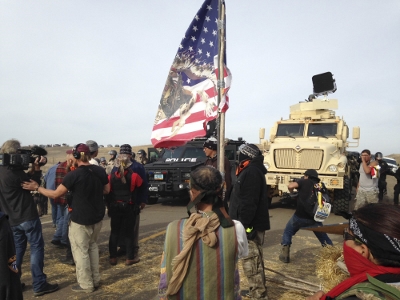
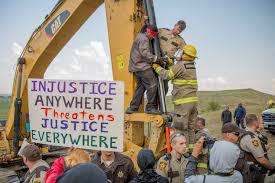
As months of protests against the Dakota Access Pipeline in North Dakota came to a head this past week, with at least 140 people arrested according to activists, there has been a groundswell of support for the Native American and environmentalist protesters gathered at several sites along the pipeline’s proposed path.
On Monday, people “checked in” at the site on Facebook in an effort to derail what activists alleged was a strategy used by law enforcement to target them based on their location according to the social network. The check-ins likely just amounted to a show of support, but amplified the #NoDAPL message nonetheless.
Native American protesters say the crude oil pipeline runs through traditional sacred land and they fear it could contaminate drinking water that supplies several nearby reservations. The Standing Rock Sioux, the tribe with the reservation closest to the pipeline’s North Dakota stretch, have been joined by several other tribes and environmentalists demonstrating against the project.
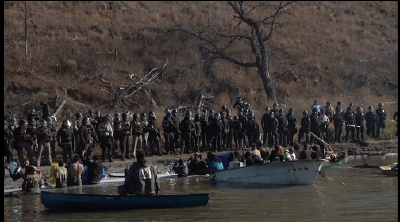
As protesters enter their fourth month camped out at several sites near the pipeline’s 1,172-mile route, here’s what you can do to support them:
Make a donation directly to the Standing Rock Sioux Tribe
These donations help the Tribe with legal, sanitary, and emergency supplies on the reservation. The tribe is taking payments either via PayPalor checks made out and mailed to:
Standing Rock Sioux Tribe
Attention: Donations
PO Box D
Building #1
North Standing Rock Avenue
Fort Yates, ND 58538
Donate clothing or food to the Sacred Stone protest campsite
You can help with supplies via this this Amazon wish list, this GoFundMe page, cash or checks to the following addresses for the Sacred Stone campsite where protesters are gathered:
Sacred Stone Camp P.O. Box 1011, Fort Yates, ND 58538
or
202 Main Street Fort Yates, ND 58538
The protest camp’s most pressing needs are firewood, tipis and tipi materials, a pick-up truck with four-wheel drive, trailers and campers for shelter, snow tires, gift cards for Lowes or Menards to purchase these supplies, wall tents with wood stoves and poles, and sleeping bags for sub-zero temperatures. A full list of supplies needed can be found here.
Donate to the Standing Rock Sioux’s legal fund, which they’re using to challenge the project in court
A few weeks ago, the Standing Rock Sioux lost a bid in federal court to halt work on the pipeline because they said the Army Corps. of Engineers granted development permits to Energy Transfer Partners without thorough tests and consultation. They have said they will appeal the judgement. You can donate to the fund at this GoFundMe page, which has reached $1.2 million of its $1.5 million goal.
Dalrymple has been mostly silent on the pipeline and the protests over the past few months, except that he called in the National Guard to deal with protesters and expressed his support for police arresting more than 140 protesters at one protest site last week.
Dalrymple’s office can be reached at 701-328-2200
or
600 East Boulevard Avenue
Bismarck, ND 58505-0100
This petition already has more than 347,000 signatures–well above the 100,000 it needed in order to require a response from the White House. But it’s still open and a good way to show the federal government how many people have concerns about the pipeline.
According to the company, the DAPL is scheduled to be finished by the end of the year, although it’s the subject of two lawsuits and a partial halt-work order from the federal Department of Justice, at least until the Army Corps. of Engineers re-evaluates public land near Lake Oahe. Until then, the fight is far from over.
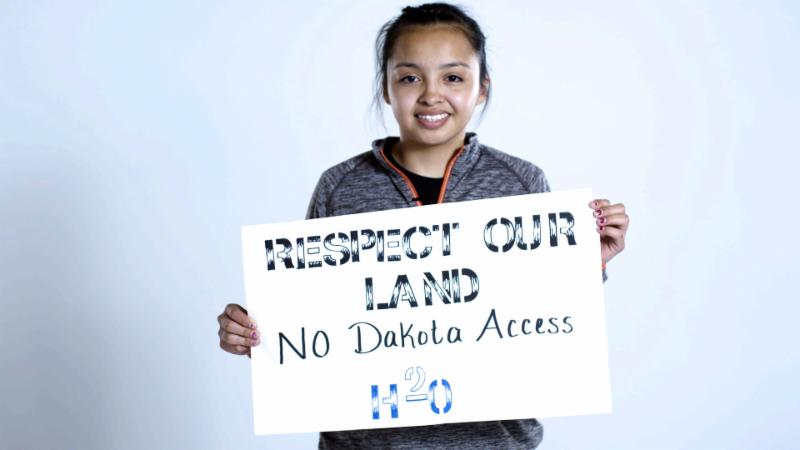
Since April, members of the Standing Rock Sioux Tribe have been fighting the 1,172-mile, four-state, Dakota Access Pipeline construction by setting up camp along the banks of Lake Oahe in North Dakota. There are several camps currently in place, including Oceti Sakowin, Sacred Stone and Red Warrior.
The pipeline was originally planned to go near Bismarck, a predominantly white town. After understandable backlash against an oil pipeline being routed through their neighborhood, the Army Corps of Engineers, the State of North Dakota and the Energy Transfer Partners decided to risk the safety and health of a Native community instead.
Oil leaks are hardly unprecedented: just this Monday, there was a major pipeline explosion in Alabama (now affecting gasoline access throughout the Southeast); and this summer, elsewhere in North Dakota, 20,000 gallons of oil spilled from a pipeline before being fixed. The DAPL pipeline, which would transport crude oil from fracking, poses the same human and environmental threats as the Keystone XL pipeline.
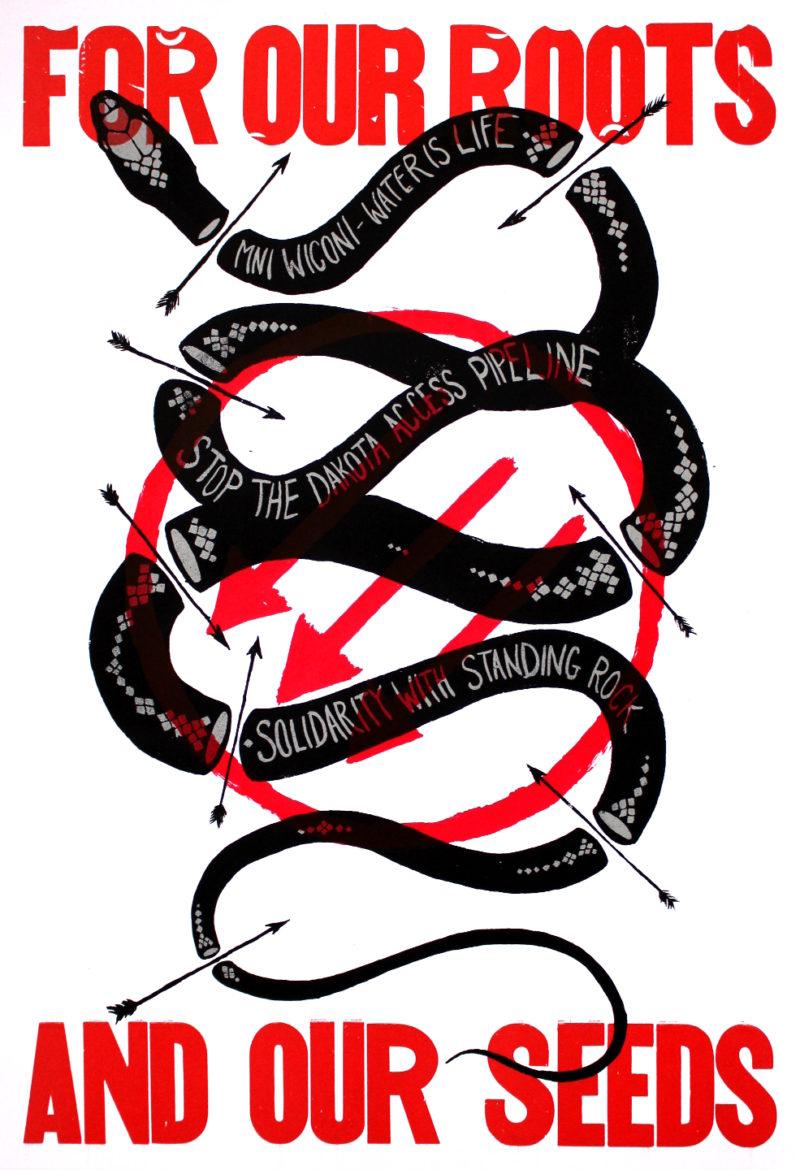
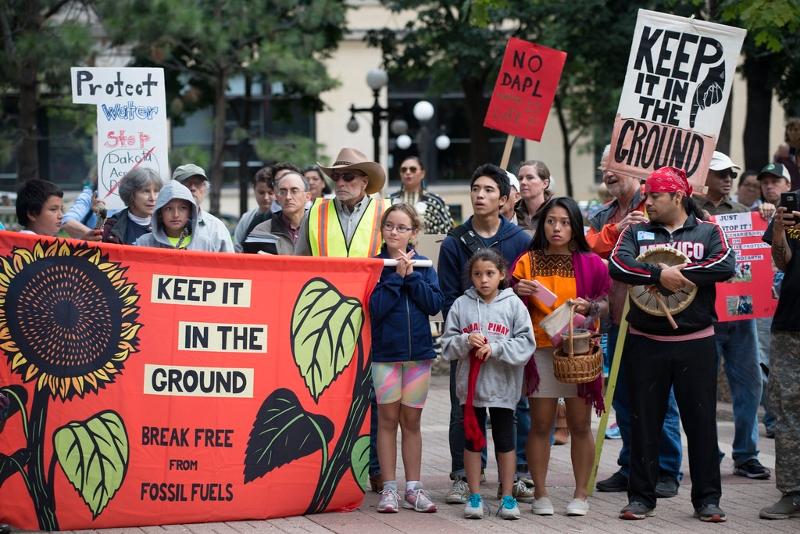
In a parallel movement, local Indigenous activists have organized under nonviolent principles as Water Protectors, putting their bodies on the line to prevent construction.
As a result, they have been met by unprecedented violence by both state police and private security contractors using attack dogs and pepper spray.
Last week, law enforcement escalated the violence by using riot police to arrest 141 nonviolent Water Protectors and confining them to dog kennels.
Given that Native Americans and Alaska Natives are killed by police more than any other group, this coordinated attack by law enforcement is particularly disturbing.
Water Protectors have been subject to numerous death threats, and earlier this week, a suspicious fire was purposely set near Oceti Sakowin Camp, making those threats real.
While the #NoDAPL movement is centered on Indigenous self-determination and confronting colonial violence, the climate change implications of a major oil pipeline are also clear, which is a major reason why environmental organizations like the Sierra Club, 350.org, Greenpeace, Rainforest Action Network, Earthjustice, and Food and Water Watch oppose the project.
But you don't need to take our word for it — you can listen to voices from Standing Rock to hear from the Water Protectors directly.
As Sahar wrote earlier this week:
Our Indigenous brothers and sisters of Standing Rock are calling on clergy and faith leaders to join them in the next coming weeks. Imagine if this oil pipe line was going through Vatican City, Bethlehem, Mecca, Medina, Najaf, Karbala, Jerusalem, Varanasi, Bodhgaya, Lhasa, Haifa, Salt Lake City, Pushkar, Anandpur Sahib, Stonehenge, Nazareth, Galilee, the Pyramids of Gaza, Manchu Picchu, Qufu, Yawata, Qum, Jaipur, Udvada, the Wudang Mountains, Babylon, Zion, Canterbury, or any other sacred site.
- Join us in Standing Rock now or in the future.
- Participate in — or consider hosting — a solidarity event in your community. You can join the Smudge Down the Banks action next week anywhere there’s a river!
- Call North Dakota Gov. Jack Dalrymple at (701) 328-2200 and share your thoughts on the pipeline and North Dakota's use of state police violence against the Water Protectors.
- Call President Obama, at (202) 456-1111 and tell him to rescind the U.S. Army Corps of Engineers’ permit for the DAPL. You can also sign a petition to the White House, but as it already has enough signatures, a call will be more effective. Given the president's remarks last night, we know he's paying attention!
- Call Jo-Ellen Darcy, Assistant Secretary of Army Corps of Engineers, at (703) 697-8986. Demand that the Corps reverse the permit for the DAPL.
- Share your thoughts on social media along with the ways you took action above using the #NoDAPL hashtag. Here's an image for Facebook, and one for Twitter.
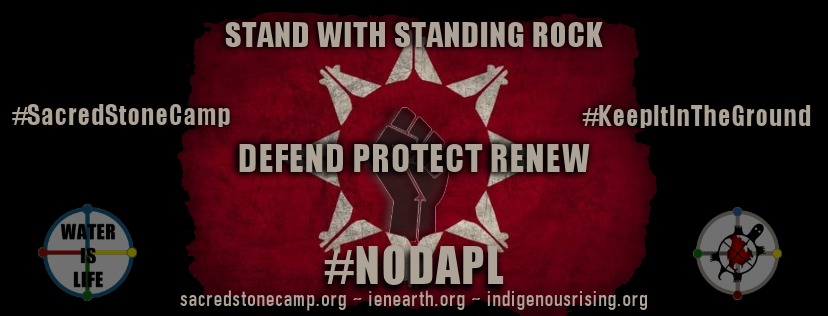

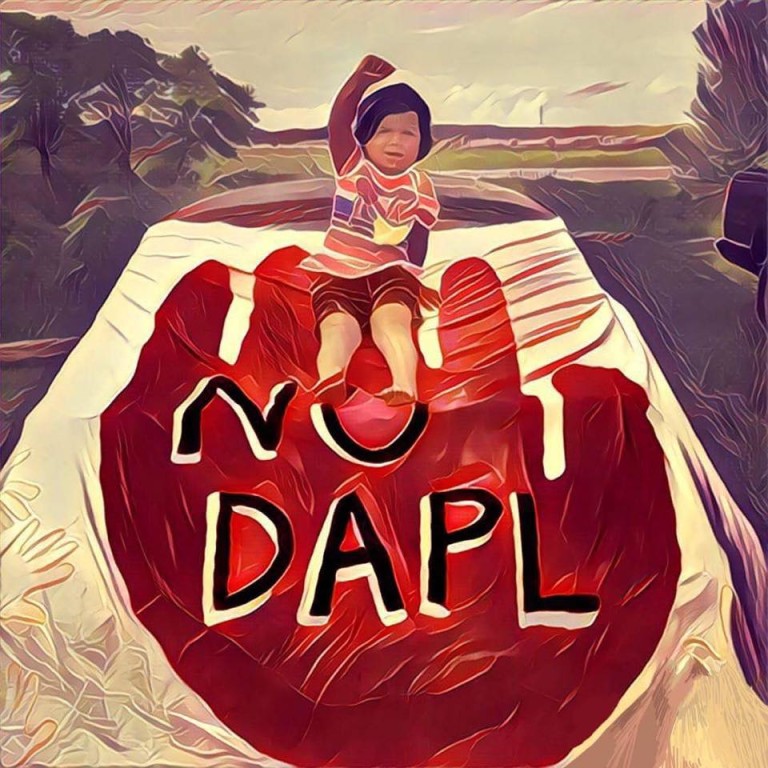
- If you're able to go to Standing Rock, sign up here.
- If you'd like to organize an action locally to put pressure on the targets articulated by organizers on the ground, head here.
-
If you're able to send money/resources, there are many different options
- Sacred Stone Camp legal defense fund and general camp fund
- Red Warrior Camp was set up in order to facilitate direct action -- there is a legal defense fund and a general camp fund, including winterization
- Standing Rock Sioux Tribe has a fund open for support

- If you can, travel to Standing Rock.
- Organize solidarity actions in your community - and mark your calendar for the November 15 Day of Action.
- "Full Exclusive Report: Dakota Access Pipeline Co. Attacks Native Americans with Dogs & Pepper Spray," Democracy Now!, 09-06-2016
- "North Dakota pipeline: 141 arrests as protesters pushed back from site," The Guardian, 10-28-2016
- "How To Talk About #NoDAPL: A Native Perspective" by Kelly Hayes, Transformative Spaces, 10-27-2016
- "One-in-four Native Americans and Alaska Natives are living in poverty," Pew Research Center, 06-13-2014
- "A History of Native Americans Protesting the Dakota Access Pipeline," Mother Jones, 09-09-2016
- "Why Native American women still have the highest rates of rape and assault," High Country News, 06-07-2016


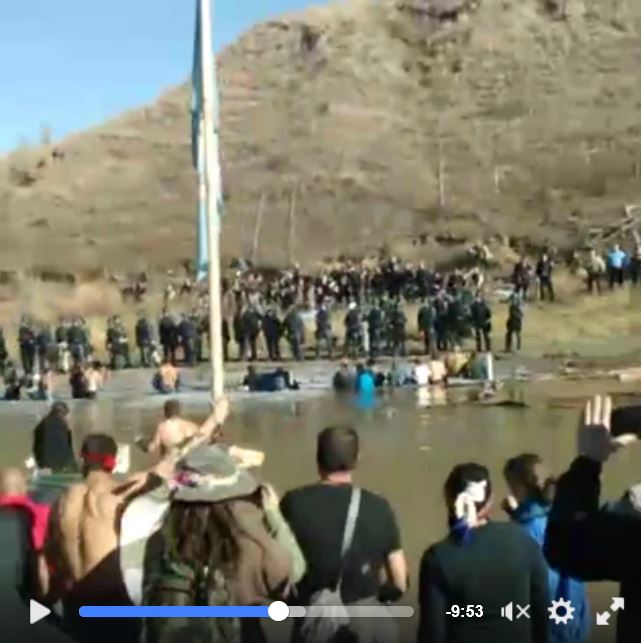
Spread the word